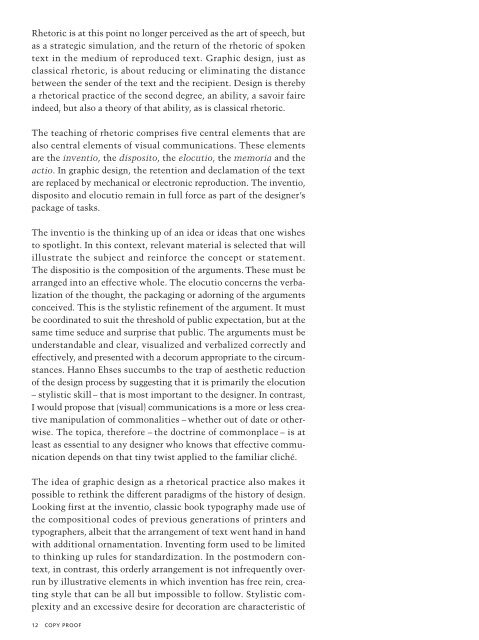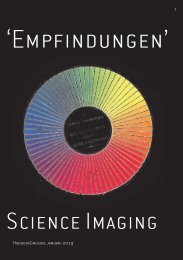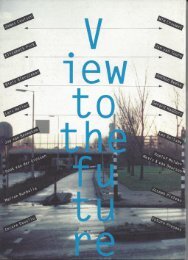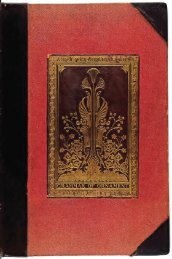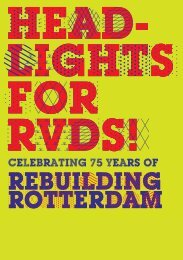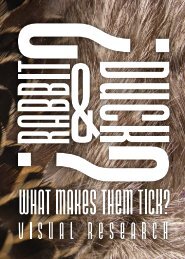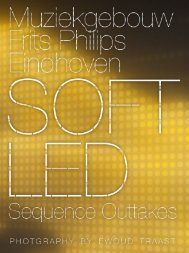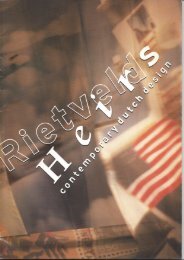Copyproof, a new method for design education. Edited by Edith Gruson and Gert Staal
Copy Proof documents an innovative educational curriculum. For the last five years, Post-St. Joost, the graduate programme in graphic design at St. Joost Academy in Breda (NL), has worked to formulate strategies to resolve the 'unteachability' of design. The book presents the theory and the practice of a new kind of designing, geared to the demands of rapidly changing technology, new patterns in the exchange and communication of information and the changing needs of society. Designers are in the process of liberating themselves from specific objects, styles and media, focusing instead on the design method itself, on the design and creation of models.
Copy Proof documents an innovative educational curriculum. For the last five years, Post-St. Joost, the graduate programme in graphic design at St. Joost Academy in Breda (NL), has worked to formulate strategies to resolve the 'unteachability' of design. The book presents the theory and the practice of a new kind of designing, geared to the demands of rapidly changing technology, new patterns in the exchange and communication of information and the changing needs of society. Designers are in the process of liberating themselves from specific objects, styles and media, focusing instead on the design method itself, on the design and creation of models.
You also want an ePaper? Increase the reach of your titles
YUMPU automatically turns print PDFs into web optimized ePapers that Google loves.
Rhetoric is at this point no longer perceived as the art of speech, but<br />
as a strategic simulation, <strong>and</strong> the return of the rhetoric of spoken<br />
text in the medium of reproduced text. Graphic <strong>design</strong>, just as<br />
classical rhetoric, is about reducing or eliminating the distance<br />
between the sender of the text <strong>and</strong> the recipient. Design is there<strong>by</strong><br />
a rhetorical practice of the second degree, an ability, a savoir faire<br />
indeed, but also a theory of that ability, as is classical rhetoric.<br />
The teaching of rhetoric comprises five central elements that are<br />
also central elements of visual communications. These elements<br />
are the inventio, the disposito, the elocutio, the memoria <strong>and</strong> the<br />
actio. In graphic <strong>design</strong>, the retention <strong>and</strong> declamation of the text<br />
are replaced <strong>by</strong> mechanical or electronic reproduction. The inventio,<br />
disposito <strong>and</strong> elocutio remain in full <strong>for</strong>ce as part of the <strong>design</strong>er’s<br />
package of tasks.<br />
The inventio is the thinking up of an idea or ideas that one wishes<br />
to spotlight. In this context, relevant material is selected that will<br />
illustrate the subject <strong>and</strong> rein<strong>for</strong>ce the concept or statement.<br />
The dispositio is the composition of the arguments. These must be<br />
arranged into an effective whole. The elocutio concerns the verb a-<br />
lization of the thought, the packaging or adorning of the arguments<br />
conceived. This is the stylistic refinement of the argument. It must<br />
be coordinated to suit the threshold of public expectation, but at the<br />
same time seduce <strong>and</strong> surprise that public. The arguments must be<br />
underst<strong>and</strong>able <strong>and</strong> clear, visualized <strong>and</strong> verbalized correctly <strong>and</strong><br />
effectively, <strong>and</strong> presented with a decorum appropriate to the circumstances.<br />
Hanno Ehses succumbs to the trap of aesthetic reduction<br />
of the <strong>design</strong> process <strong>by</strong> suggesting that it is primarily the elocution<br />
– stylistic skill – that is most important to the <strong>design</strong>er. In contrast,<br />
I would propose that (visual) communications is a more or less creative<br />
manipulation of commonalities – whether out of date or otherwise.<br />
The topica, there<strong>for</strong>e – the doctrine of commonplace – is at<br />
least as essential to any <strong>design</strong>er who knows that effective communication<br />
depends on that tiny twist applied to the familiar cliché.<br />
The idea of graphic <strong>design</strong> as a rhetorical practice also makes it<br />
possible to rethink the different paradigms of the history of <strong>design</strong>.<br />
Looking first at the inventio, classic book typography made use of<br />
the compositional codes of previous generations of printers <strong>and</strong><br />
typographers, albeit that the arrangement of text went h<strong>and</strong> in h<strong>and</strong><br />
with additional ornamentation. Inventing <strong>for</strong>m used to be limited<br />
to thinking up rules <strong>for</strong> st<strong>and</strong>ardization. In the post modern context,<br />
in contrast, this orderly arrangement is not infrequently overrun<br />
<strong>by</strong> illustrative elements in which invention has free rein, creating<br />
style that can be all but impossible to follow. Stylistic complexity<br />
<strong>and</strong> an excessive desire <strong>for</strong> decoration are characteristic of<br />
12 COPY PROOF


